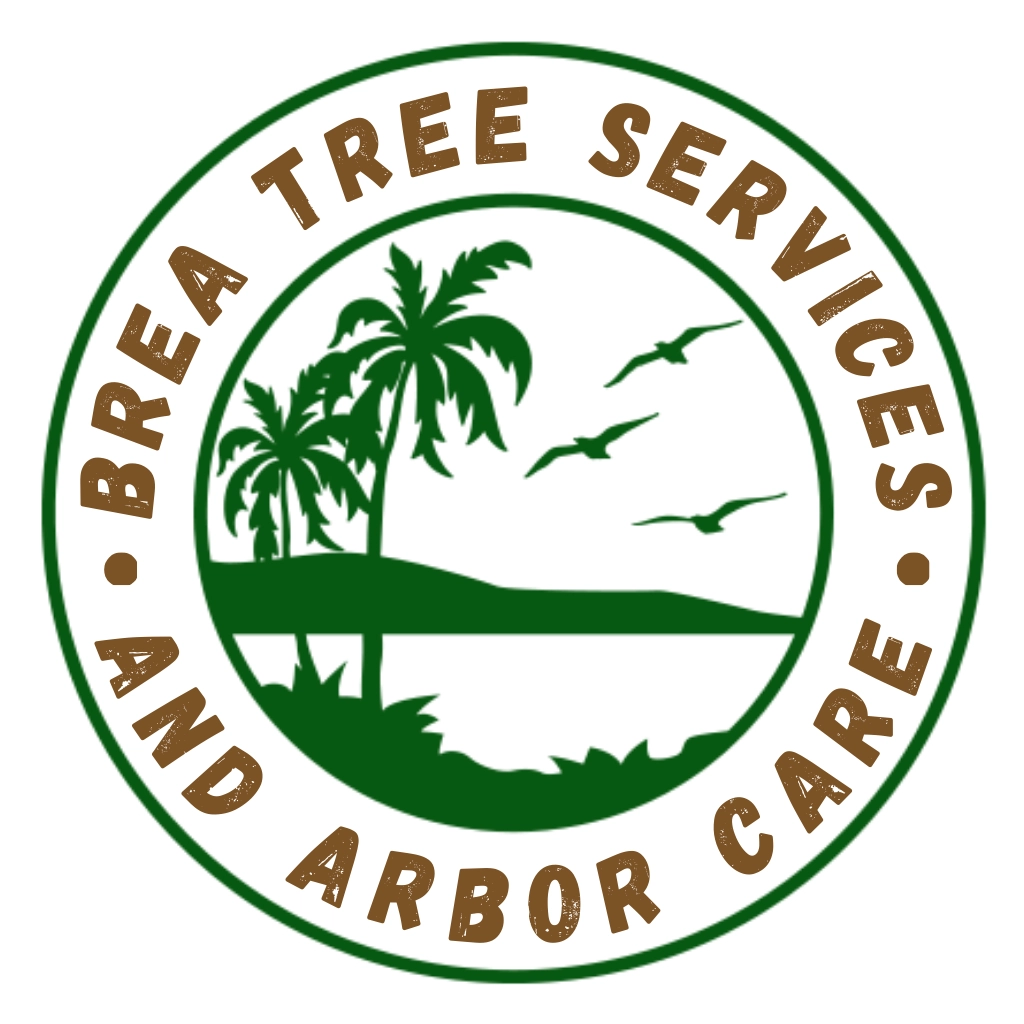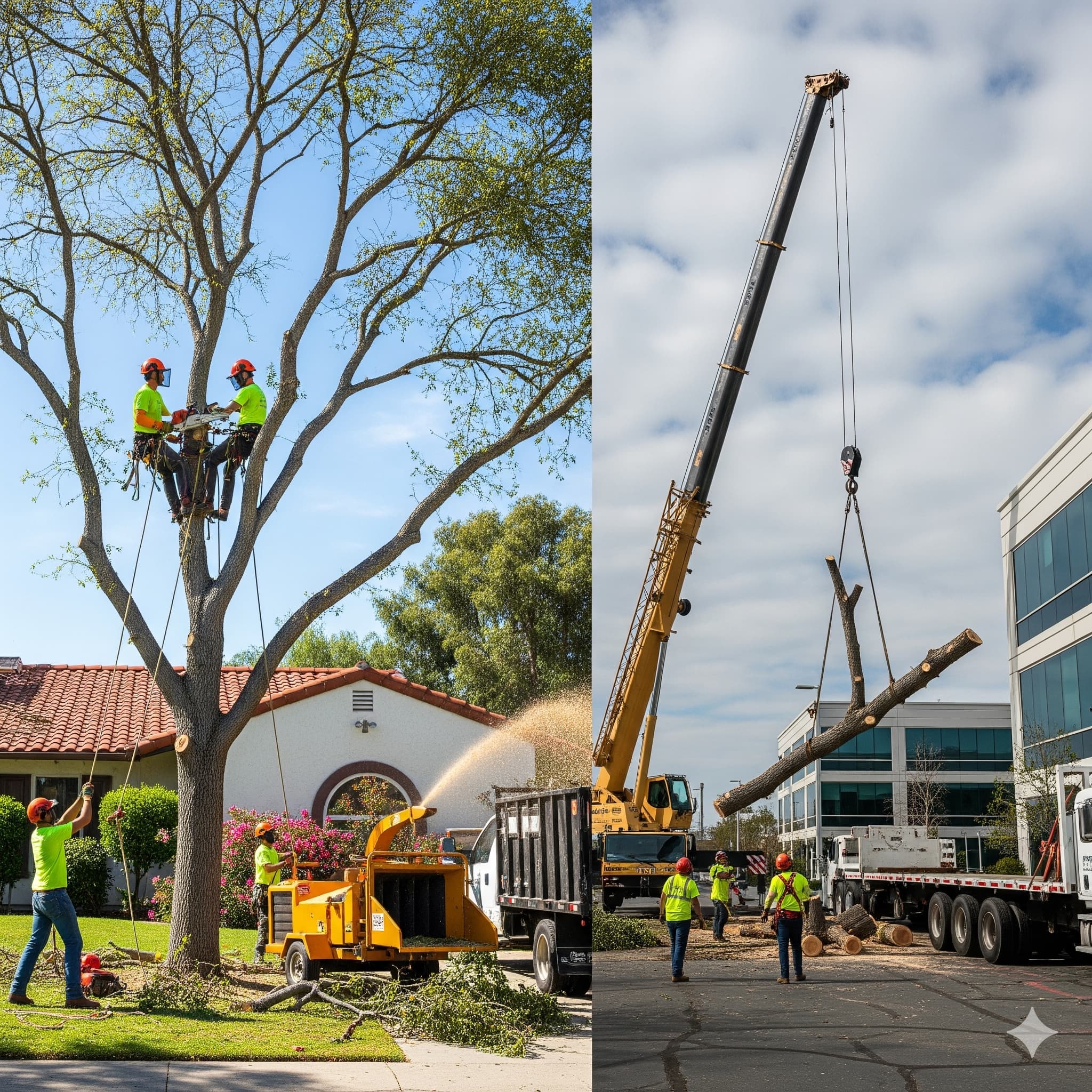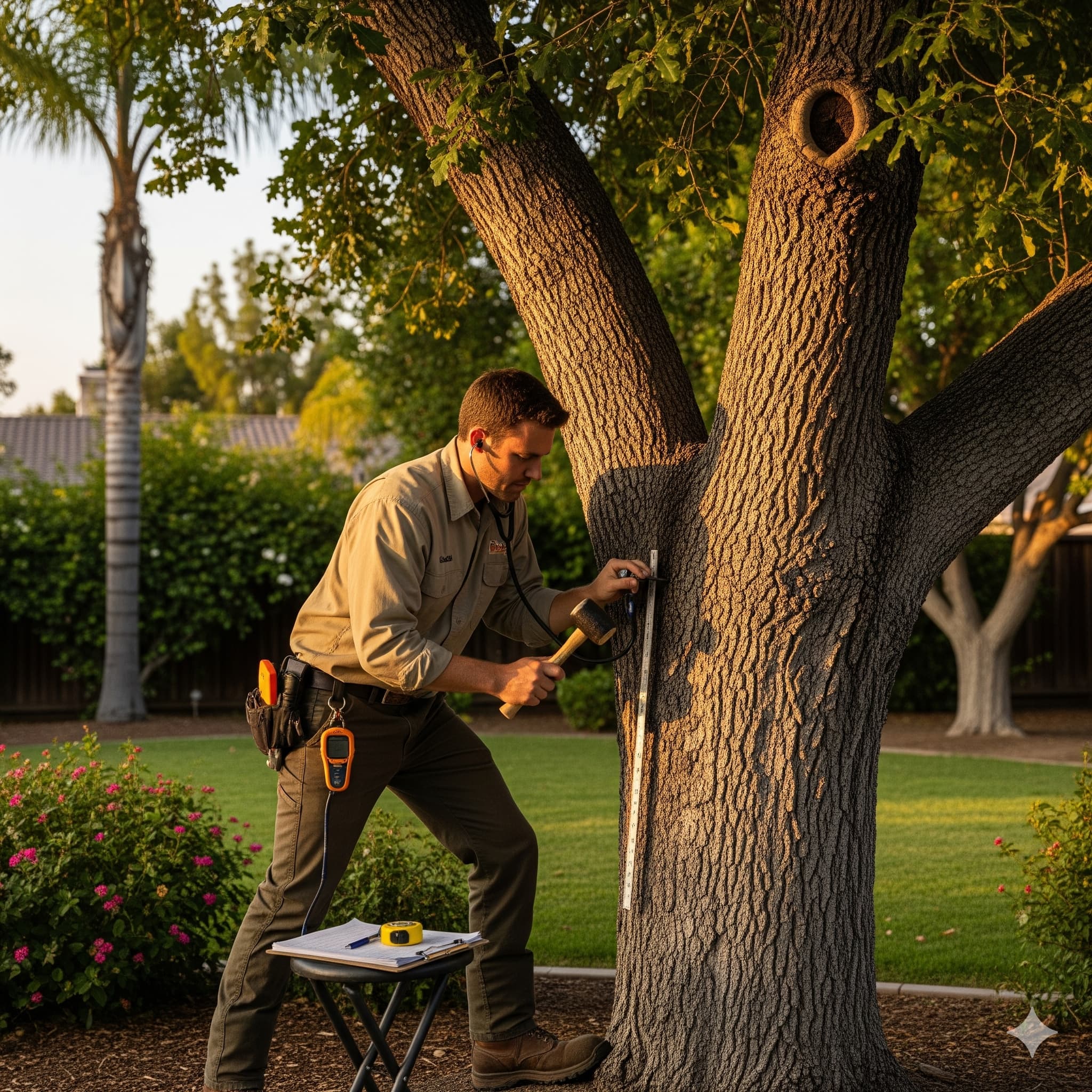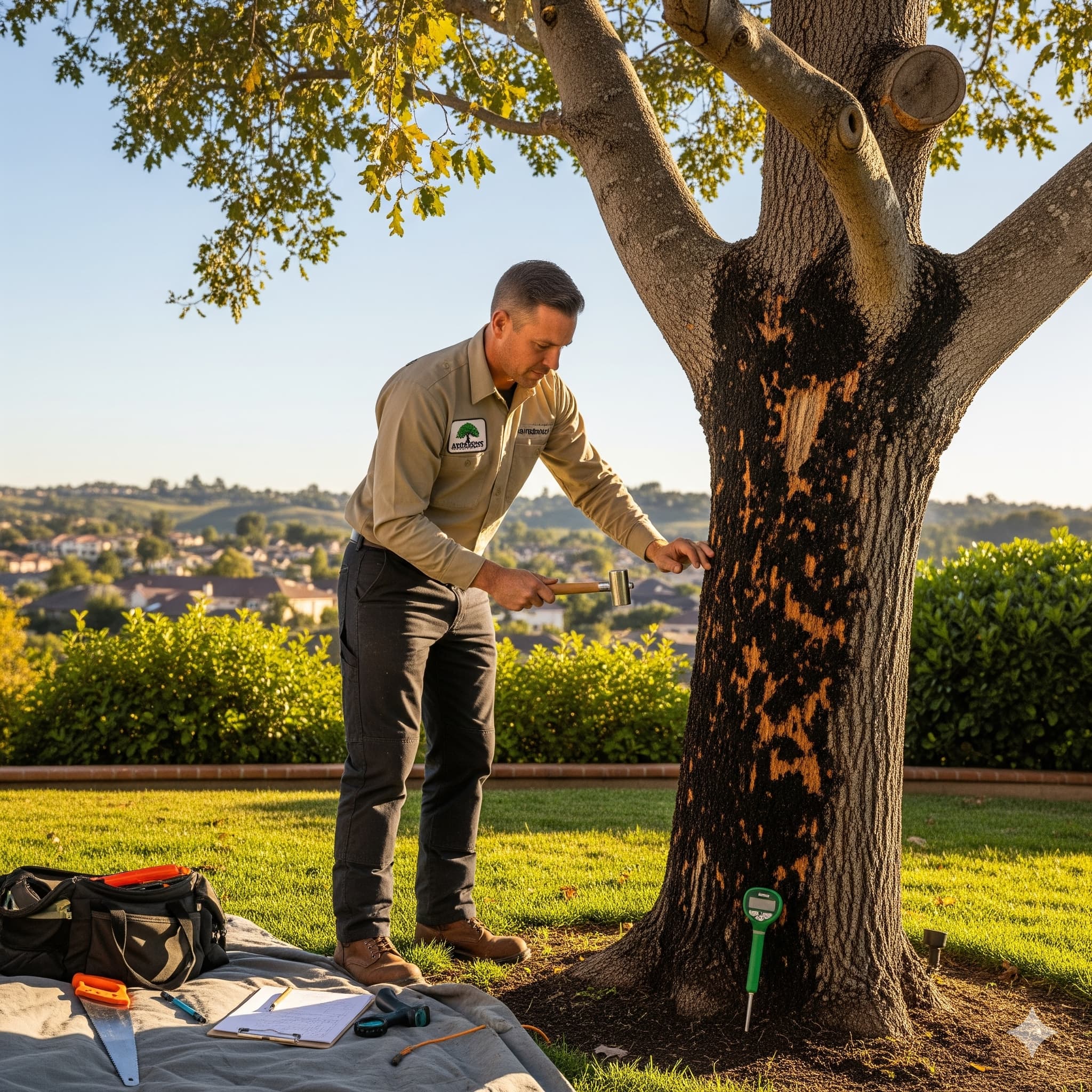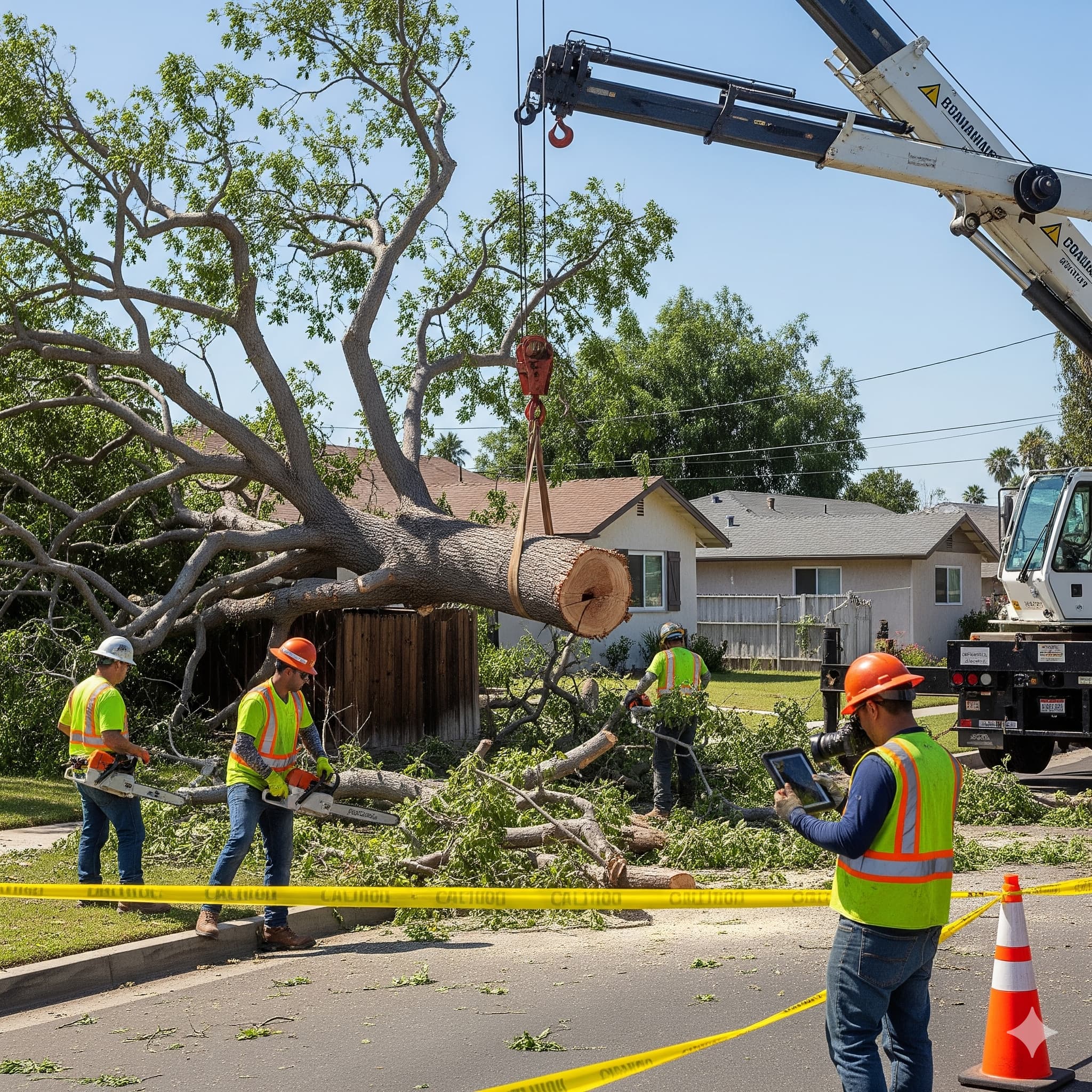
Storm Cleanup in Brea: Essential Checklist Before Hiring
When severe weather strikes Brea, property owners face urgent decisions about storm damage cleanup that can impact both safety and insurance claims. Southern California’s notorious Santa Ana winds, winter storms, and unexpected weather events create unique challenges requiring immediate professional response. Before hiring any service for storm damage cleanup, understanding critical safety protocols, documentation requirements, and contractor qualifications protects your property and ensures proper insurance coverage.
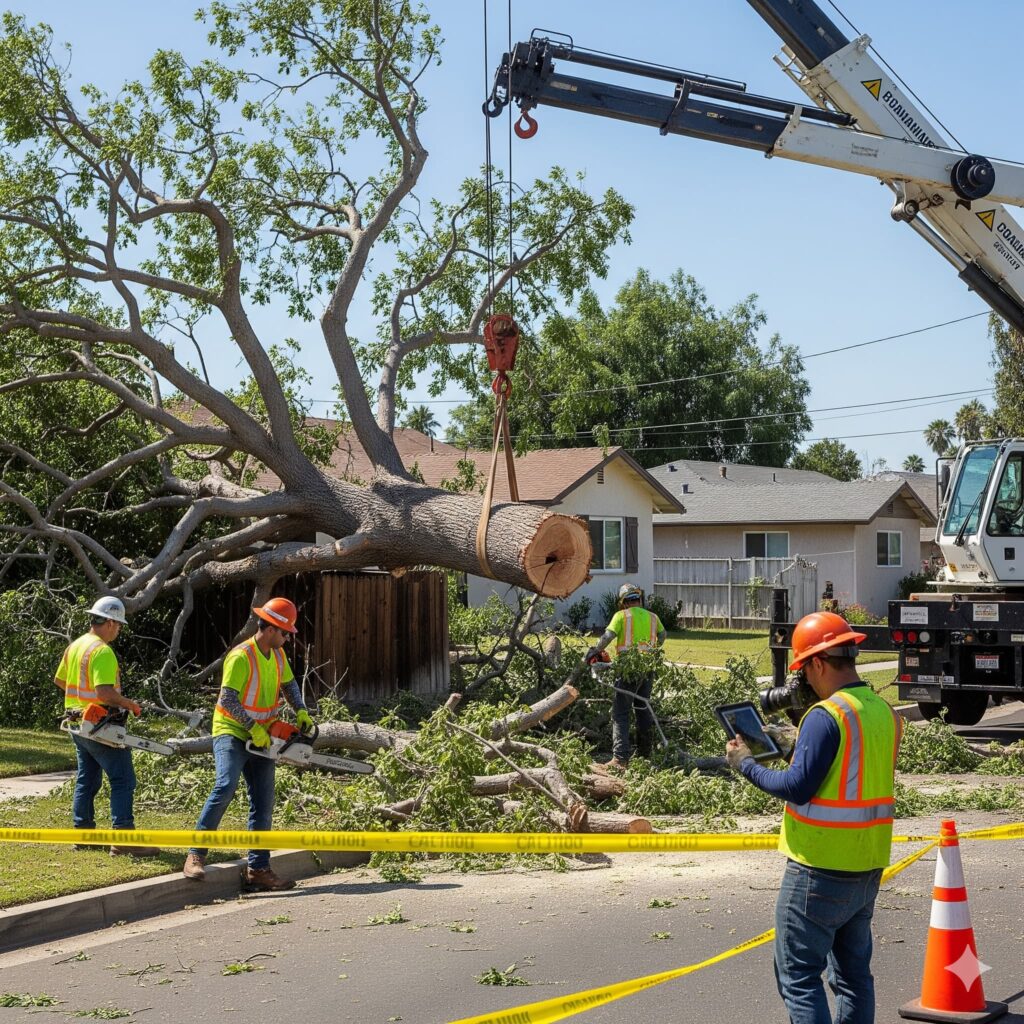
Understanding Brea’s Storm Risks
Brea’s location in Orange County places it directly in the path of Southern California’s most destructive weather patterns. Understanding these risks helps property owners prepare for potential storm damage cleanup needs and respond appropriately when emergencies arise.
Santa Ana Wind Impact
Santa Ana winds represent the most significant storm threat to Brea properties, with gusts regularly reaching 50-70 mph and occasionally exceeding 100 mph in elevated areas. These dry, powerful winds sweep across Southern California from inland deserts, creating critical conditions for tree failure and structural damage.
During Santa Ana events, winds channel through mountain passes and intensify as they reach populated areas like Brea. Properties near Carbon Canyon Regional Park and hillside neighborhoods experience particularly severe wind exposure, often resulting in multiple tree failures requiring immediate storm damage cleanup services.
Recent wind events have demonstrated the destructive potential, with trees falling onto homes, power lines, and vehicles throughout Southern California communities. The combination of extremely dry conditions and hurricane-force winds creates perfect conditions for widespread property damage requiring professional cleanup services.
Winter Storm Patterns
Winter storms bringing heavy rain, ice, and occasional snow create different cleanup challenges for Brea properties. Saturated soil conditions combined with strong winds often cause healthy trees to uproot, particularly those with shallow root systems or compromised structural integrity.
Properties with mature landscaping near landmarks like City Hall Park or established neighborhoods often experience multiple tree failures during single storm events. The weight of water-saturated branches and compromised root stability create cascading failures requiring comprehensive storm damage cleanup efforts.
Immediate Safety Assessment
Before considering any storm damage cleanup services, property owners must prioritize immediate safety concerns that could threaten lives or cause additional property damage.
Emergency Hazard Identification
Start your assessment from a safe distance, identifying immediate threats like downed power lines, unstable trees, and structural damage. Never approach fallen trees that may be in contact with electrical systems or creating structural instability.
Look for hanging branches, partially fallen trees, and root uplift that could indicate imminent failure. These hazardous conditions require immediate professional attention before any cleanup work begins. Trees leaning against structures or suspended in other trees create particularly dangerous situations.
Document visible hazards from safe locations using photography and detailed written notes. This documentation proves essential for both safety coordination with cleanup crews and insurance claim support later in the process.
Utility Line Safety
Downed power lines represent the most serious immediate threat during storm damage cleanup situations. Treat all downed lines as energized and maintain at least 35-foot clearance from fallen wires and any trees or debris in contact with electrical systems.
Contact Southern California Edison immediately to report downed lines or electrical hazards. Never attempt to move branches, trees, or debris that may be in contact with power lines, even if they appear to be telephone or cable lines.
Professional storm damage cleanup crews require utility clearance before beginning work in areas with electrical hazards. Proper coordination with utility companies prevents accidents and ensures legal compliance during emergency cleanup operations.
Documentation Requirements
Proper documentation during the immediate aftermath of storm damage proves critical for insurance claims and protects your interests throughout the cleanup process.
Pre-Cleanup Photography
Document all damage thoroughly before any cleanup work begins. Take photographs from multiple angles showing the full extent of tree damage, property impact, and surrounding conditions. Include close-up shots of specific damage points and wide-angle views showing overall scene context.
Photograph damaged structures, vehicles, landscaping, and infrastructure from various perspectives. Date-stamp all images and maintain digital copies in multiple locations to ensure documentation security throughout the insurance process.
Include reference points in photographs to establish scale and context for damage assessment. Property markers, structures, and familiar landmarks help insurance adjusters understand damage scope and facilitate accurate claim processing.
Detailed Damage Inventory
Create comprehensive written inventories documenting all visible damage, including tree species, approximate sizes, and property impacts. Note any hazardous conditions, accessibility concerns, and potential complications for cleanup crews.
Record weather conditions, time stamps, and any immediate actions taken to prevent further damage. This timeline documentation helps establish cause-and-effect relationships essential for insurance claim validation.
Maintain detailed records of all communications with insurance companies, utility providers, and emergency services. These records prove valuable if disputes arise during the claim settlement process.
Insurance Considerations
Understanding insurance coverage for storm damage cleanup helps property owners make informed decisions about immediate response actions and service provider selection.
Coverage Limitations and Requirements
Most homeowners’ insurance policies cover storm damage cleanup when trees damage structures or block access, but coverage limits typically range from $500 to $1,000 per tree. Understanding these limitations helps set realistic expectations for covered services versus out-of-pocket expenses.
Insurance companies generally require that storm damage result from covered perils like wind, lightning, or fire. Damage from floods, earthquakes, or tree failure due to age or neglect may not qualify for coverage, making a professional assessment crucial for claim viability.
Property owners have a duty to prevent further damage and may proceed with emergency cleanup without prior insurance approval. However, proper documentation and reasonable cost management remain essential for successful claim processing.
Emergency Action Authority
Insurance policies typically allow immediate emergency action to prevent additional damage without waiting for adjuster approval. This authority covers essential safety measures and stabilization work, but requires proper documentation and reasonable cost management.
Property owners can authorize emergency tree removal, temporary roof protection, and debris cleanup necessary to prevent further damage or ensure safety. However, costs should align with local market rates and avoid premium pricing that might be considered excessive.
Save all receipts, contracts, and documentation related to emergency work. Insurance companies may request detailed justification for emergency expenses, making thorough record-keeping essential for reimbursement.
Contractor Qualification Checklist
Emergency conditions create opportunities for unqualified contractors to exploit property owners facing urgent cleanup needs. Verifying contractor qualifications protects both safety and financial interests.
License and Insurance Verification
Require proof of current contractor licensing appropriate for tree work and storm damage cleanup. California requires specific licenses for tree service work, and contractors should provide current license numbers that you can verify independently.
Demand certificates of insurance showing both general liability coverage and workers’ compensation insurance. Liability coverage should meet the minimum requirements of $1 million for residential work, with higher limits preferred for complex cleanup projects.
Verify that insurance certificates name your property as additionally insured and confirm coverage remains current throughout the project duration. Expired or inadequate insurance creates significant liability exposure for property owners.
Professional Certifications
Look for ISA Certified Arborists or Tree Care Industry Association accreditation when selecting storm damage cleanup providers. These credentials demonstrate professional training and commitment to industry standards.
Our team at Brea Tree Services & Arbor Care maintains current ISA certifications and comprehensive insurance coverage specifically designed for emergency tree work and storm damage cleanup throughout Brea and the surrounding areas.
Verify that crew members have appropriate training for hazardous tree removal and understand proper safety protocols. Storm-damaged trees present unique risks requiring specialized knowledge and equipment.
Cost and Pricing Transparency
Emergency conditions often lead to premium pricing, but understanding reasonable cost ranges helps property owners avoid price gouging while ensuring quality service.
Emergency Pricing Factors
Emergency storm damage cleanup typically costs 25-50% more than standard tree removal due to increased risks, urgent scheduling, and hazardous conditions. However, excessive pricing may indicate opportunistic contractors taking advantage of emergencies.
Factors justifying emergency premiums include after-hours work, hazardous conditions, utility coordination requirements, and immediate response availability. Legitimate emergency pricing reflects actual increased costs and risks, not arbitrary markup.
Request detailed written estimates breaking down labor, equipment, disposal, and other costs. Transparent pricing helps distinguish legitimate emergency rates from exploitative pricing practices.
Competitive Pricing Guidelines
Even during emergencies, obtain multiple estimates when time permits. Comparing prices from qualified contractors helps identify reasonable market rates and avoid excessive charges that insurance may not cover.
Emergency tree removal costs in Brea typically range from $500-$2,500 for most residential situations, with larger or more complex removals potentially exceeding $5,000. Crane-assisted removal adds $500-$2,500 per day to basic costs.
Be suspicious of quotes significantly above or below market ranges. Extremely low prices may indicate inadequate insurance or qualifications, while excessive pricing suggests potential exploitation of emergency conditions.
Scope of Work Definition
Clear scope definition prevents misunderstandings and ensures comprehensive cleanup that meets both safety and insurance requirements.
Essential Cleanup Services
Storm damage cleanup should include the complete removal of fallen trees, hazardous branches, and debris threatening safety or causing property damage. Specify whether services include stump grinding, root removal, and site cleanup to match insurance coverage expectations.
Define debris disposal requirements, including wood chipping, hauling, and site restoration. Some property owners prefer to retain firewood or mulch, while others require complete removal and cleanup.
Clarify any structural repairs needed for damaged fences, structures, or landscapes. Some storm damage cleanup providers offer comprehensive services, while others focus solely on tree removal and debris cleanup.
Timeline and Scheduling
Establish realistic timelines for emergency cleanup work, recognizing that severe weather events create high demand for qualified contractors. Priority should focus on safety hazards and damage prevention rather than aesthetic cleanup.
Properties near schools, businesses, or major thoroughfares like those around Brea Mall may require expedited cleanup to address public safety concerns. Coordinate with local authorities if cleanup affects public areas or roadways.
Plan for potential delays due to weather, utility coordination, or permit requirements. Complex storm damage cleanup projects may require several days or weeks for complete resolution.
Communication and Coordination
Effective communication with contractors, insurance companies, and local authorities ensures smooth cleanup operations and proper claim processing.
Insurance Company Coordination
Notify your insurance company immediately after storm damage occurs, but don’t wait for adjuster approval before addressing safety hazards. Property owners have both the right and the responsibility to take immediate action to prevent further damage.
Provide insurance companies with comprehensive documentation, contractor estimates, and progress updates throughout the cleanup process. This proactive communication facilitates faster claim processing and payment approval.
Choose contractors willing to work directly with insurance companies and provide the necessary documentation for claim support. Experienced storm damage cleanup providers understand insurance requirements and can streamline the process.
Local Authority Requirements
Check with Brea’s building department regarding permit requirements for extensive tree removal or cleanup work. Some situations may require permits, particularly when work affects public areas or protected trees.
Coordinate with utility companies before beginning cleanup in areas with overhead or underground utilities. Proper coordination prevents accidents and ensures compliance with utility safety requirements.
Notify neighbors of planned cleanup activities that might affect their properties or create temporary access needs. Good communication prevents conflicts and facilitates efficient cleanup operations.
Post-Cleanup Considerations
Storm damage cleanup extends beyond immediate tree removal to include site restoration, preventive measures, and future storm preparation.
Site Restoration Planning
Develop plans for landscape restoration, including soil repair, replanting, and erosion control measures. Storm damage often creates opportunities to improve landscape design and tree selection for future storm resilience.
Consider irrigation system repairs, drainage improvements, and structural modifications that enhance property resilience. Properties near landmarks like Arovista Park or Birch Hills Golf Course may benefit from professional landscape architecture consultation.
Plan replanting with storm-resistant species appropriate for Brea’s climate and wind exposure. Native California species and fire-resistant plants provide long-term resilience while supporting local ecosystems.
Future Storm Preparation
Use storm damage cleanup as an opportunity to assess overall property vulnerability and develop proactive maintenance plans. Regular tree inspection, pruning, and hazard removal prevent future storm damage and reduce cleanup costs.
Consider installing tree support systems, improving drainage, and modifying landscapes to reduce wind exposure and failure risks. Preventive measures cost significantly less than emergency cleanup and property repairs.
Establish relationships with qualified tree care professionals before emergencies arise. Having trusted contractors identified in advance ensures rapid response and fair pricing during future storm events.
Professional Expertise You Can Trust
Storm damage cleanup requires immediate professional response combined with careful attention to safety, documentation, and contractor selection. Property owners who understand these essential considerations protect their interests while ensuring effective cleanup and recovery.
At Brea Tree Services & Arbor Care, we maintain 24/7 emergency response capabilities specifically designed for storm damage cleanup throughout Brea and surrounding communities. Our ISA-certified arborists understand local weather patterns, insurance requirements, and safety protocols essential for effective emergency response.
From the hillside properties near Carbon Canyon to established neighborhoods throughout Brea, we provide comprehensive storm damage cleanup services that prioritize safety, documentation, and professional quality. Contact our emergency response team when storm damage threatens your property – we’re ready to respond immediately with the expertise and equipment necessary for safe, efficient cleanup operations.
